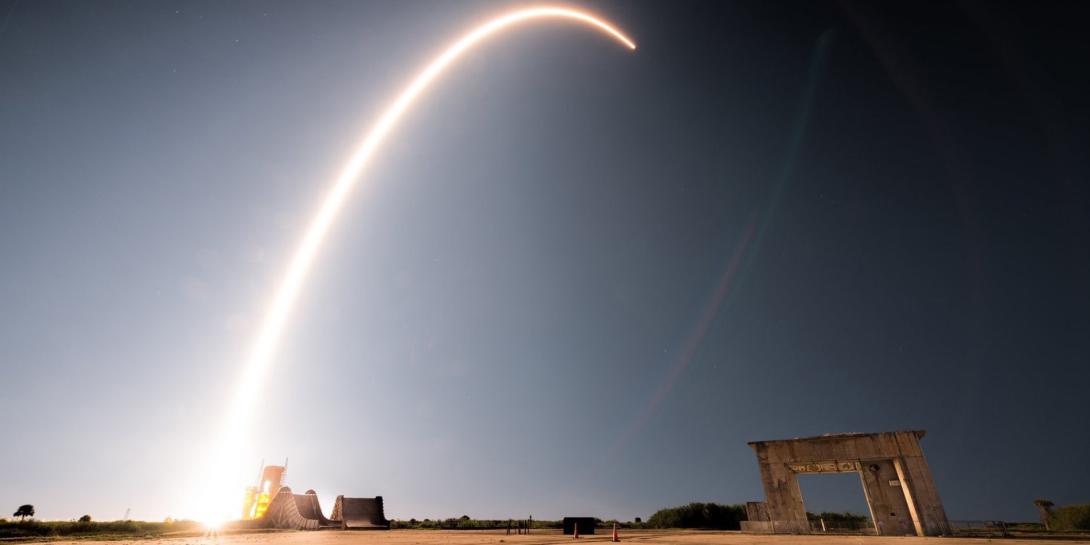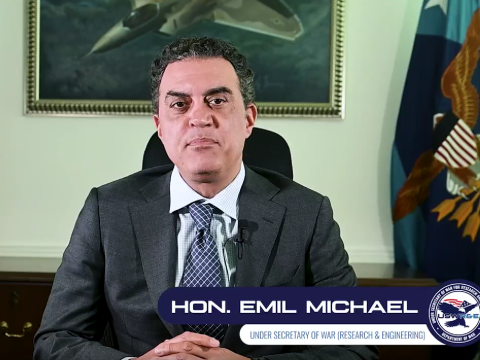U.S. Space Force Budget To Sharpen Space Awareness
The U.S. Space Force is requesting $24.5 billion from Congress for its fiscal year 2023 operating budget, most of which is an ask for $15.8 billion for research, development, test and evaluation efforts, given the need to modernize and protect U.S. military space-based assets. The Space Force provides space-based capabilities in support of the Air Force’s core missions of command and control, and intelligence, surveillance and reconnaissance, amongst other efforts.
And indeed, the Space Force’s proposed budget reflects its need to provide “indispensable support that underpins all other joint operations,” said Maj. Gen. James Peccia, deputy assistant secretary of the Air Force for Budget, during a live-streamed budget briefing at the Pentagon on March 28. “The Department of the Air Force [space-based] capabilities and platforms that underpinned our success over the last two decades will be insufficient against the pacing challenge. From defining a resilient and effective space order of battle to defining the next generation air dominance family of systems, to ensuring, we, as a department, are ready to transition to a wartime posture against a peer competitor.”
A portion of that research, development, test and evaluation (RDT&E) request, about $1.448 billion, accounts for the Space Force’s absorption of the Space Development Agency, or SDA. The three-year-old agency was charged with rapidly developing a successful National Defense Space Architecture (NDSA), which it is on track to achieve, reported SDA Director Derek Tournear in a recent media call. In February, for the first part of the Transport Layer of the NDSA, the SDA awarded $1.8 billion in prototype agreements for 126 optically interconnected space vehicles to be part of a mesh network providing a resilient, low-latency, high-volume data transport communication system, with a planned associated launch of the space vehicles starting in September 2024.
For the Space Force and the greater military, the robust NDSA will provide global, persistent indications, warning, tracking and identification of both conventional and advanced missile threats, including hypersonic missile systems. $987 million of the budget request is earmarked for the Space Technology Development and Prototyping office for SDA’s missile warning and tracking aspects, while $461 million is requested for Space Science and Technology research and development for the data transport layer of the NDSA. The transition is already underway for the agency to fully join the Space Force by October 1, Tournear said. And hopefully, Congress’ funding will be in place also.
In addition, the Space Force seeks to invest $3.479 billion in next-generation overhead persistent infrared (OPIR) capabilities, including for the OPIR missile warning ground and geosynchronous (GEO) space segments. To address hypersonic and maneuverable reentry vehicle missile threats, the proposed budget also requests $1.03 billion for resilient missile warning and tracking capabilities.
“This new resilient missile warning, missile tracking system and tracking design indicates the Space Force’s pivot to a series of resilient, survivable and defendable architectures,” Gen. Peccia stated. “This framework addresses emerging challenges such as hypersonic missiles and anti-satellite weapons and allows the Space Force to access a more diverse space of satellite vendors and launch providers who are also providing to proliferated constellations for commercial applications.”
In addition, the service has identified $566 million for its evolved strategic satellite communications efforts. Known as ESS, that venture will replace the Advanced Extremely High Frequency constellation of communications used by the U.S. military to communicate with key partners such as the U.K., Canadian, Netherland and Australian militaries.
The Space Force also is continuing to pursue its deep space advanced radar capability, or DARC, which will provide a 24/7, all-weather tracking capability of space objects in GEO orbit. It is asking $231 million in FY23 for DARC Site 1 prototyping. For its protected tactical enterprise service, the Space Force requested $121 million for continued anti-jamming performance capabilities for global satellite communications.
“Our investments in space domain awareness, such as the Deep Space Advanced Radar Capability, or DARC, provide a critical all-weather radar system capability to counter existing and emerging threats in deep space and supports tactical timelines defined for strategic space defense,” the general stressed.
To support these endeavors, the Space Force is pursuing eight planned launches in FY23, including three national security-related space launches, three SDA-related launches and two Global Positioning System III follow-on launches, all of which fall under the service’s major procurement efforts.
Notably, $36 million of the service’s RTD&E request is slated for climate change-related initiatives.





Comments